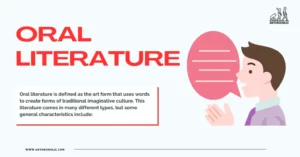AI Answer Evaluation Platform Live Now. Try Free Answer Evaluation Now
Mesozoic Era
The Mesozoic Era, often known as the Age of Reptiles, marks a pivotal time in Earth’s history characterized by the dominance of dinosaurs and the emergence of flowering plants and modern mammals. This era is divided into three geologic periods: the Triassic, Jurassic, and Cretaceous [1].

Overview of the Mesozoic Era
- Span: Roughly 252 to 66 million years ago [2]
- Notable for: Dominance of dinosaurs, emergence of mammals and flowering plants, the breakup of supercontinent Pangaea
- Ended with: The Cretaceous-Paleogene extinction event [3]
Geological Timeframe: Periods and Epochs
The Mesozoic Era is further divided into three periods, each with its unique characteristics and dominant life forms:
| Period | Duration (Million Years Ago) | Notable Events |
|---|---|---|
| Triassic | 252 to 201 | First dinosaurs, first mammals, Pangaea begins to rift |
| Jurassic | 201 to 145 | Dinosaurs flourish, first birds, Pangaea splits further |
| Cretaceous | 145 to 66 | Flowering plants dominate, end of dinosaurs |
Triassic Period (252 to 201 million years ago)
The Triassic Period was a time of significant evolutionary experimentation and diversification. Following the Permian extinction, life on Earth was recovering and setting the stage for the rise of the dinosaurs [4].
- First Dinosaurs: Dinosaurs began to appear in the late Triassic Period. These first dinosaurs were small, bipedal creatures.
- Emergence of Mammals: The first mammals also emerged during this period, though they were small and not yet the dominant terrestrial animals.
- Pangaea Begins to Breakup: The supercontinent Pangaea started to break apart towards the end of the Triassic, leading to the formation of the Atlantic Ocean [5].
Jurassic Period (201 to 145 million years ago)
The Jurassic Period is known as the “Golden Age of Dinosaurs.” It saw the appearance of many familiar dinosaur species, such as Brachiosaurus, Stegosaurus, and Allosaurus [6].
- Dinosaurs Flourish: Dinosaurs became the dominant terrestrial vertebrates. The largest dinosaurs, including the long-necked sauropodomorphs, evolved during this period.
- First Birds: The first birds evolved from theropod dinosaurs. Archaeopteryx, the oldest known bird, appeared during the Jurassic Period [7].
- Continued Breakup of Pangaea: Pangaea split into two landmasses, Laurasia in the north and Gondwana in the south.
Cretaceous Period (145 to 66 million years ago)
The Cretaceous Period witnessed the continuation and climax of many trends started in the previous periods.
- Flowering Plants: Flowering plants, or angiosperms, evolved and became the dominant plant life.
- End of Dinosaurs: The Cretaceous ended with the Cretaceous-Paleogene extinction event, which wiped out about three-quarters of the plant and animal species on Earth, including most dinosaurs [8].
Significance of the Mesozoic Era
The Mesozoic Era was a time of extraordinary biological development and diversity. It’s during this era that life on land truly flourished, setting the stage for the ecosystems we know today. The extinction event that ended the Mesozoic paved the way for the Cenozoic Era, often referred to as the “Age of Mammals”[9].
The Mesozoic Climate and Environment
The climate during the Mesozoic Era varied widely across its three periods and played a significant role in shaping the lifeforms of the era [10].
Triassic Climate
During the Triassic, the Earth was generally dry and hot, particularly in the interior of the supercontinent Pangaea. This desert-like environment was dotted with rivers and lakes that provided habitats for early dinosaurs and other lifeforms [11].
Jurassic Climate
As Pangaea started to break apart, more coastal habitats formed, contributing to increased humidity and rainfall across the globe. This created lush, tropical conditions in which dinosaurs thrived [12].
Cretaceous Climate
The climate during the Cretaceous Period was warm, with high sea levels and no polar ice caps. This warm climate, combined with the proliferation of flowering plants, led to the evolution of diverse animal and plant life [13].
Mesozoic Marine Life
The Mesozoic seas were home to a variety of marine reptiles, invertebrates, and the first coral reefs.
- Marine Reptiles: Iconic marine reptiles like Ichthyosaurs, Plesiosaurs, and Mosasaurs flourished during the Mesozoic Era [14].
- Invertebrates: Many groups of marine invertebrates, including ammonites and belemnites, thrived during this era.
- Coral Reefs: The first modern coral reefs began to form in the Mesozoic, providing diverse marine habitats [15].
The End of the Mesozoic Era
The end of the Mesozoic Era was marked by the Cretaceous-Paleogene (K-Pg) extinction event. Most famously, this event led to the extinction of the non-avian dinosaurs [16].
- Possible Causes: The most widely accepted cause is the impact of a large asteroid or comet near what is now the Yucatán Peninsula in Mexico. Volcanic activity in what is now India may have also played a role.
- Impact on Life: This extinction event profoundly affected life on Earth, leading to the extinction of about 75% of all species [17].
The end of the Mesozoic Era marked the end of the dinosaurs’ dominance and paved the way for mammals to become the dominant terrestrial animals during the subsequent Cenozoic Era.
In conclusion, the Mesozoic Era was a pivotal chapter in Earth’s history. It showcased significant evolutionary experimentation and diversification, climaxing in the golden age of dinosaurs and setting the stage for the mammals’ dominance that we observe today.
References
[1] Britannica, The Editors of Encyclopaedia. “Mesozoic Era.” Encyclopedia Britannica.
[2] Gradstein, F.M., Ogg, J.G., Schmitz, M., and Ogg, G. (2012). “The Geologic Time Scale 2012”.
[3] Schulte, P., et al. (2010). “The Chicxulub Asteroid Impact and Mass Extinction at the Cretaceous-Paleogene Boundary”. Science.
[4] Benton, M.J. (2005). “Vertebrate Paleontology”. Blackwell Science Ltd.
[5] Torsvik, T.H., and Cocks, L.R.M. (2017). “Earth History and Palaeogeography”. Cambridge University Press.
[6] Holtz, T.R., Jr. (2007). “Dinosaurs: The Most Complete, Up-to-Date Encyclopedia for Dinosaur Lovers of All Ages”. Random House.
[7] Chiappe, L.M. (2007). “Glorified Dinosaurs: The Origin and Early Evolution of Birds”. Wiley-Liss.
[8] Renne, P.R., et al. (2013). “Time Scales of Critical Events Around the Cretaceous-Paleogene Boundary”. Science.
[9] Prothero, D.R. (2006). “After the Dinosaurs: The Age of Mammals”. Indiana University Press.
[10] Sellwood, B.W., and Valdes, P.J. (2006). “Mesozoic climates: General circulation models and the rock record”. Sedimentary Geology.
[11] Preto, N., Kustatscher, E., and Wignall, P.B. (2010). “Triassic climates”. Earth-Science Reviews.
[12] Hallam, A. (2001). “A Review of the Broad Pattern of Jurassic Sea-Level Changes and Their Possible Causes in the Light of Current Knowledge”. Palaeogeography, Palaeoclimatology, Palaeoecology.
[13] Huber, B.T., Norris, R.D., and MacLeod, K.G. (2002). “Deep-sea paleotemperature record of extreme warmth during the Cretaceous”. Geology.
[14] Benton, M.J. (1993). “The Fossil Record 2”. Chapman & Hall.
[15] Stanley Jr., G.D. (2006). “Photosymbiosis and the Evolution of Modern Coral Reefs”. Science.
[16] Alvarez, L.W., et al. (1980). “Extraterrestrial Cause for the Cretaceous-Tertiary Extinction”. Science.




